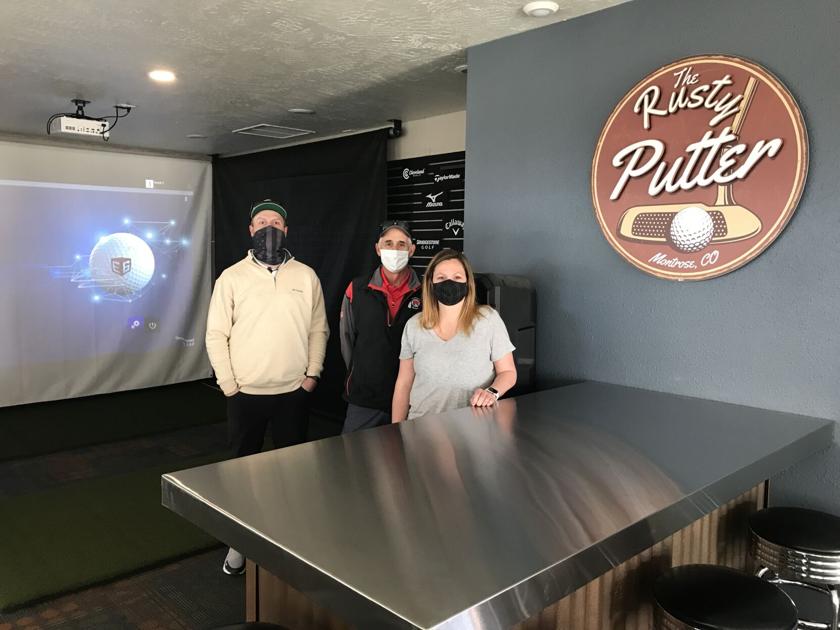
Good afternoon, Montrose.
No one got stuck in a canal during a sandstorm while in the production of today’s notes.
Butter Side Up……This is the annual all-about-golf column. Montrose golfers are blessed to have three courses hereabouts that are in terrific shape and offer a variety of passes, play packages and memberships. All three courses have leadership and superintendents in place to consistently tweak the conditions and the aesthetics. There are three more good courses nearby in Delta, Ridgway and Cedaredge.
I don’t know much about the game; I’ve only been playing for 59 years. Yet, here’s a divot of news from the Montrose courses.
• Black Canyon Golf Course. Montrose’s oldest course, where a good many learn the game, is coming off a good year, says PGA pro Tom Young. The pandemic pushed its number of rounds played to more than 24,000 last year, a 20% gain. People got outside, played more golf or learned the game. “Our public play last year was significant,” he added. New additions for 2021 include a new restaurant, The Rusty Putter. “It’ll be open seven days with more consistent hours,” said Young. A golf simulator has also been added with rental rates at $40 an hour, offering local golfers a year-round virtual play option. The simulator will also benefit club fitting and lessons.
• The Bridges. The club welcomed a new PGA professional, Brian Franco, and a new chef, Devin Myrick, who has debuted a new menu. “He concentrates on making everything fresh, from scratch,” said Eric Feely, the general manager. The Bridges will also host an American Junior Golf Association event Aug. 1-5 featuring the top-rated young players from all over the world.
• The Links at Cobble Creek. Cobble has a new PGA professional, Kayla Keltz Rusk. (MDP, March 20) Longtime course superintendent Paul Treide showed off a new entryway to the development, situated adjacent the first tee. There are also upgraded cart paths and bridges, he added. “We had a good winter, water wise. Good snow cover. Now there’s sunshine. It’s all good,” said Treide.
Ch-Ch-Ch-Ch-Changes……The great golfer Byron Nelson (1912-2006) was once asked his opinion on the single-most, sport-altering invention in the game. Nelson thought on it for a good while. Then replied: “Lawn mowers. Better lawn mowers.”
Instead of citing square grooves on clubfaces, or more dimples on a ball, or titanium shafts on big-headed drivers, Nelson explained how better golf course grooming equipment enabled the pros to post lower scores, enabled amateurs to enjoy the game more. Better greens keeping with better equipment changed the aesthetics and brought more people out to play.
Another innovation that’s too often overlooked was the development of “spike-less” golf shoes. Hobnails, first applied to shoes in 1893, enabled golfers to get a better swing on the ball, hitting it square and further, without slipping. The term “nailed it” has its derivation from this footwear alteration.
Mass manufacturing of golf shoes with steel spikes (12) were the norm for generations. But the spikes tore up carefully manicured greens, typically a point of pride for golf courses, their superintendents and members. If a golfer fixed a spike mark, he or she would be in violation of Rule 13-1, improving a line of play. Raymond Floyd, a golf Hall of Famer, may have lost the 1990 Masters because of a spike mark. Floyd hit a perfect putt in a playoff with Nick Faldo, but the ball hit an unrepaired spike mark and went offline.
The “spike-less” or soft-spikes shoe revolution took root in Boise in 1992. Four guys wanted to play, but the course superintendent wouldn’t let them, citing wet greens and the time it takes for the greens to recover from the scars of spike marks. Faris McMullin was one of them. He is credited with the invention and patent of SoftSpikes, a plastic cleat. The company he co-founded, Softspikes, went from selling 500,000 pairs of golf shoes in 1995 to more than 20 million today.
One regret, though. A rite of passage. Many a young golfer, getting that first pair of steel-spiked shoes, showed them off with a noisy clickety-clack rhythm across patios and cart paths. Lot of pride in that sound, which echoed to everyone nearby: Hey, I’m a player, too. No more Keds or Chucks for me.
• Your best round of golf will be followed by your worst round ever. The probability of the latter increases with the number of people you informed about the former.
• The higher the golfer’s handicap, the more qualified he deems himself as an instructor.
• Counting on your opponent to inform you when he breaks a rule is like expecting him to make fun of his own haircut.
• You can hit a 2-acre fairway 10% of the time and a 2-inch tree branch 90% of the time.
• Don’t buy a putter until you’ve had a chance to throw it.
• The “best stick” in the bag is often a pencil.
